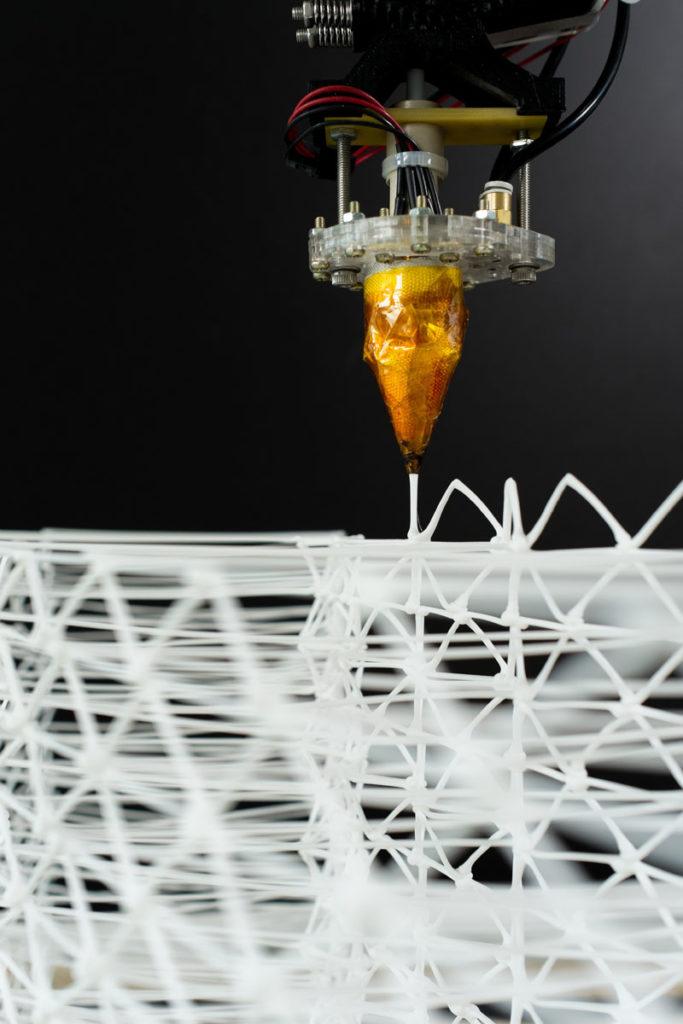Researchers Win Swiss Technology Award for Work in 3D Printing and Reverse Engineering with Concrete
Reverse engineering is one of those methods that is fascinating to many because it means you have to think about a project—in reverse. Even if we have no idea how to do something like this, our brains immediately set to work trying to figure it out because it’s just fun to think about working from the opposite direction. Researchers at ETH Zurich were able to make that a reality, and probably much easier than you or I would. And in fact, they are the recent recipients of the Swiss Technology Award 2016 for their work in reverse engineering with concrete molds.
 Reverse engineering is something that we definitely hear more and more about lately, as a growing trend not only in engineering but with hackers and makers as well. With this technique, you can take something completely apart, operating in ‘how did they do this’ mode and then put it back together—and perhaps with a few customizations of your own.
Reverse engineering is something that we definitely hear more and more about lately, as a growing trend not only in engineering but with hackers and makers as well. With this technique, you can take something completely apart, operating in ‘how did they do this’ mode and then put it back together—and perhaps with a few customizations of your own.
For this project, the researchers used 3D printing robotic arms to make mesh mold for creating concrete structures. Their mission was to see that the molds would not only maintain their shape but also provide additional strength. Their technique is called Mesh Mould, and the team sees it as offering great new opportunities for applications in concrete.
“Mesh-Mould combines formwork and reinforcement into one single robotically fabricated construction system,” stated the researchers.
And as 3D printing has been involved, you can be assured there are numerous benefits such as greater affordability and the means to fabricate more complex geometries.
“The research project Mesh Mould addresses the 1:1 construction aspects of robotically fabricated loadbearing structures,” stated the research team. “Considering the use of standard industrial robots with its limited payload capacities, however with a high capacity for precise spatial coordination, an optimal use of the machine requires construction processes with minimal mass transfer and a high degree of geometric definition.”
Employing a matrix constructed of woven filament, Mesh Mould allows for the wet concrete to be contained until it dries, showing a new set of capabilities for 3D printing in construction in terms of load-bearing walls and columns—both of which can be made at an accelerated rate, and for considerably less. With these innovative new molds and the reverse engineered concrete, the researchers project a lessened need for constructing frameworks, allowing for less waste and additional cost.
The research team originally began this project sponsored by the National Center of Competence in Research (NCCR) Digital Fabrication, using plastics, but as they progressed and tested their technique further, they began using metal 3D printing successfully. They have plans to test it further next year at the NEST building in Dübendorf where they are making a concrete wall. Discuss in the Reverse Engineering forum at 3DPB.com.
[Sources: ConstructionDIVE; Gramazio Kohler Research / Images: GKR]Subscribe to Our Email Newsletter
Stay up-to-date on all the latest news from the 3D printing industry and receive information and offers from third party vendors.
Print Services
Upload your 3D Models and get them printed quickly and efficiently.
You May Also Like
3D Printing News Briefs, July 2, 2025: Copper Alloys, Defense Manufacturing, & More
We’re starting off with metals in today’s 3D Printing News Briefs, as Farsoon has unveiled a large-scale AM solution for copper alloys, and Meltio used its wire-laser metal solution to...
3DPOD 260: John Hart on VulcanForms, MIT, Desktop Metal and More
John Hart is a Professor at MIT; he´s also the director of the Laboratory for Manufacturing and Productivity as well as the director of the Center for Advanced Production Technologies....
3D Printing News Briefs, June 28, 2025: Defense Accelerator, Surgical Models, & More
In this weekend’s 3D Printing News Briefs, 3YOURMIND was selected to join an EU Defense Accelerator, and PTC has announced model-based definition (MBD) capabilities within Onshape. Finally, a study out...
EOS in India: AM’s Rising Star
EOS is doubling down on India. With a growing base of aerospace startups, new government policies, and a massive engineering workforce, India is quickly becoming one of the most important...



































